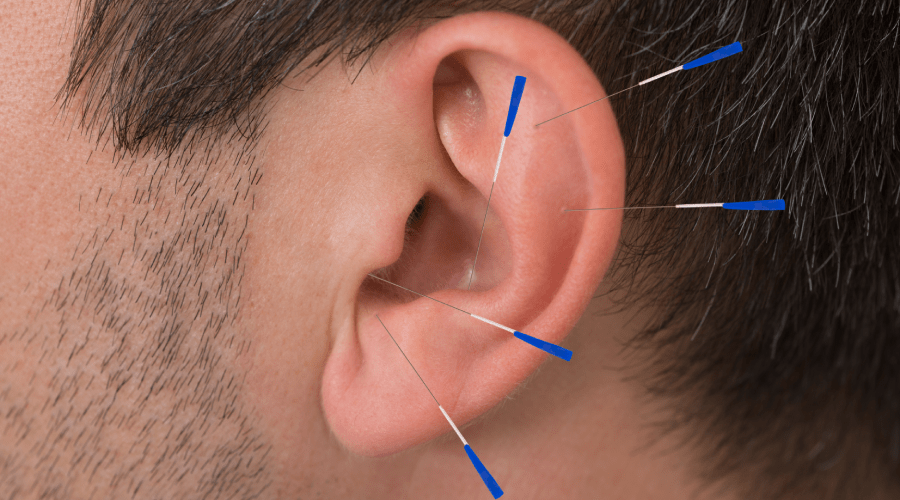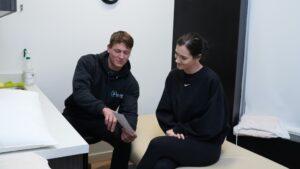
The theory of inserting needles into the body to relieve pain is nothing new. People recognize it as acupuncture – a traditional Chinese medicine (TCM). It can help reduce body pain, eye strain, and stress and help with overall wellness.
With technological advancement, acupuncture propelled other techniques to evolve. By incorporating TCM with western medicine, doctors like Dr. Gunn developed exciting processes to treat chronic pain and muscle tension in the 1970s.
One such process is Intramuscular Stimulation.
Understanding Intramuscular Stimulation
Intramuscular Stimulation (IMS), or dry needling, effectively treats people suffering from chronic musculoskeletal pain and neuropathy. Typically, neuropathy refers to pain in the peripheral nerves and not the central nervous system. It occurs when nerves malfunction after an injury or tissue irritation.
Some examples of neuropathic pain include:
- Pain due to an unknown injury
- Pain worsens with time
- Pain during regular painless activity
- Sharp and sudden pain
- Muscle shortening
- Burning, stabbing, or shooting pain
- A feeling of pins and needles
- Trigger pain without warning
In neuropathic pain, a person’s nerve endings turn sensitive and start to interpret usual sensations as pain. Some people also experience numbness and muscle weakness. It results in ongoing pain without showing physical signs of injury or inflammation.
Intramuscular stimulation releases muscle tension by inserting tiny needles into the muscle or fascia where the tissue is tense or knotted.
Based on western medicine, the process identifies and treats the source of the pain and releases muscle shortening, thus relieving pain. There is no use of an electrical function in the IMS; instead, it is a mechanical stimulation to offer therapeutic benefits.
According to studies, some patients with myofascial pain syndrome and lower back pain experienced significant relief with IMS.
Intramuscular Stimulation Procedure
Only a trained IMS physiotherapist or certified physician can perform the IMS procedure. It takes a thorough physical examination to catch physical signs of neuropathic pain.
Such pain is not visible on X-Rays, CT scans, or MRIs and hence requires experts in IMS to perform the procedure.
Special autonomic nerve system tests, movement screening tests, and pulses can help assess the condition.
During the treatment, physiotherapists use fine needles, similar to traditional acupuncture needles.
The first step is sterilizing the area and then inserting needles where the patient is experiencing muscle tightness.
They will then manipulate as required, changing the depth and location. It creates a minor therapeutic injury that causes a twitch or a cramp in the patient’s muscle. The twitching and cramping are signs of abnormal muscle functioning.
The feeling can be quite painful, depending on the intensity of the muscle shortening. However, it eases over time.
After sufficient stimulation in the tightened muscle, the therapist will remove the needle. Your therapist may repeat the process several times on different trigger points. The stimulation process triggers a spinal cord reaction, letting the muscle relax and helping nerves function correctly.
The minor injury also increases blood circulation, which supports the healing process. Each Intramuscular Stimulation is cumulative, providing muscle restoration and targeting complete healing.
Frequency and Number of Sessions

The total number of sessions one needs will vary based on muscle pain intensity and how long the patient has been in pain. If the muscles are tight for a more extended period, the circulation will be slower, and treatment will be longer.
However, most patients experience improvement right after the first session. Full recovery might take 6 to 10 sessions or more. The therapist decides the frequency of IMS treatment. Usually, you can get IMS once a week or once every two weeks. The gap between the treatment gives the body the time to heal itself.
Each session might take about half an hour to perform, and you may have to stay in the clinic for 10 minutes after the treatment.
When To Opt For Intramuscular Stimulation Treatment
IMS can have profound positive effects on different types of injury. It mainly helps with musculoskeletal and neuropathic pain in the chronic stage (more than six weeks). Patients with the following issue can opt for Intramuscular stimulation treatment:
- Tennis/golfer elbow and rotator cuff strains
- Achilles Tendonitis
- Headaches and neck pain
- TMJ pain
- Sports injury
- Chronic postural pain
- Whiplash and lower back pain
- Muscle strain and hip pain
- Shoulder pain and frozen shoulder
- Carpal tunnel syndrome
- Sciatica and Torticollis
- Spinal disc injury
- Myofascial pain syndrome
- Piriformis and Patella-femoral syndrome
- Recurring strain injuries
- Shin splints and trigger finger
- Iliotibial band syndrome and Plantar fasciitis
These are some conditions for which Intramuscular Stimulation can help. However, only your Physiotherapist will be able to decide if you are an ideal candidate for the treatment.
Therapeutic Benefits of IMS
Some benefits of Intramuscular Stimulation include:
- Relieves pain and soreness
- Reduces inflammation and joint pain
- Reduces muscle tightness
- Improves flexibility and range of motion
- Speeds up recovery and more
Dr. Gunn’s Intramuscular Stimulation helps patients with chronic musculoskeletal and neuropathic pain. It will not work on chronic inflammatory pain or other types of pain. Patients with pain from diabetes, cancer, arthritis, or Parkinson’s disease may not have relief from IMS.
Risks and Side Effects of Intramuscular Stimulation Treatment
The risks and side effects associated with Intramuscular Stimulation treatment are rare. A most common side effect is an infection due to needles. It can typically happen if the small artery or vein is hit during the needle insertion.
Some patients can experience minor bruises, tenderness, or redness in the treated area. However, when dealing with the best rehabilitation clinic, the practitioner will use sterile needles and carefully perform the treatment to get maximum benefits and minimum discomfort.
Side effects like soreness and mild pain are also common, which settle within a few days. Most rehabilitation centers advise patients to take a lot of healthy liquids to flush out body toxins and improve healing after the treatment.
IMS is never performed on significant organs such as the kidney or lungs, as there is a risk of puncture, internal bleeding, or collapse of organs. Also, pregnant ladies and patients recovering from surgeries and infections are advised not to undergo IMS.
Conclusion
If you suffer from chronic pain or injury, opting for Intramuscular Stimulation can give you positive results. At Synergy Rehab, we have certified experts performing IMS with utmost care. Contact us to know more about our therapies, including IMS, and select the best option for your wellness.







